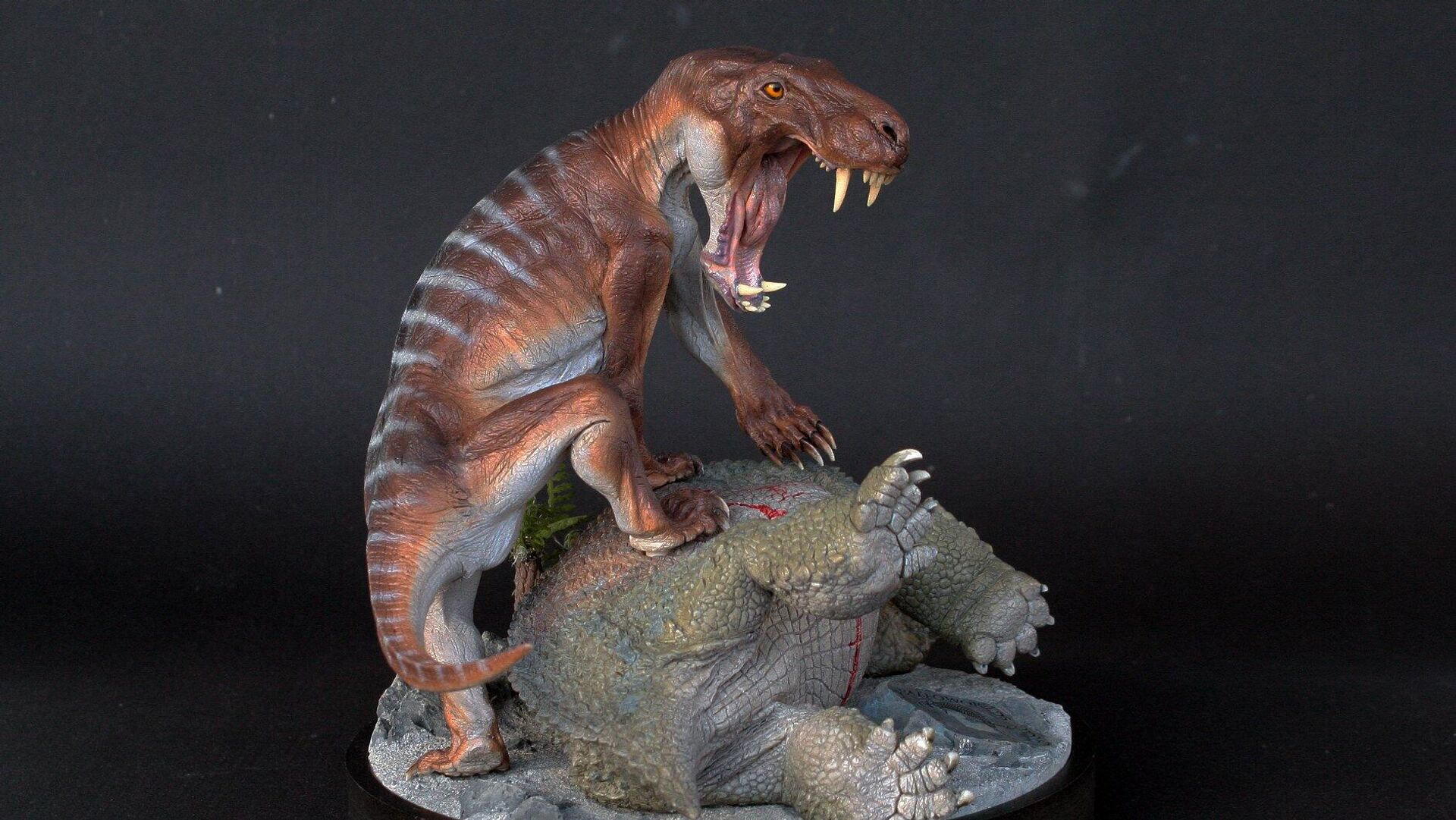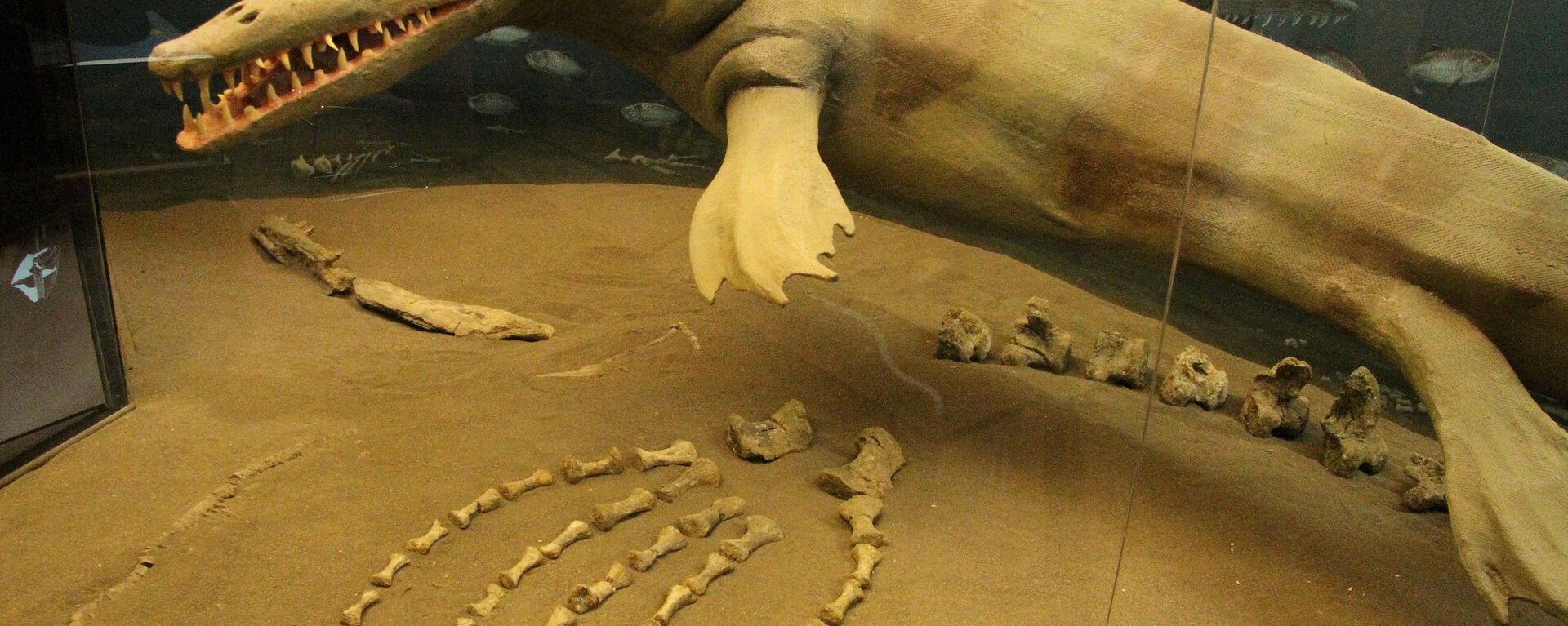https://en.sputniknews.africa/20230523/better-world-ancient-apex-predator-likely-migrated-to-south-africa-from-russia-to-survive-1059429662.html
Better World: Ancient Apex Predator Likely Migrated to South Africa From Russia to Survive
Better World: Ancient Apex Predator Likely Migrated to South Africa From Russia to Survive
Sputnik Africa
At the conclusion of the Permian Period, around 252 million years ago, runaway global warming brought on by catastrophic volcanism in Siberia caused the largest mass extinction on record, wiping out perhaps 90% of all species.
2023-05-23T17:08+0200
2023-05-23T17:08+0200
2023-08-04T17:50+0200
sub-saharan africa
southern africa
south africa
science
fossils
https://cdn1.img.sputniknews.africa/img/07e7/05/17/1059430241_0:0:1887:1062_1920x0_80_0_0_a80999a87f5668175a419b49f2cb0784.jpg
Unlike the asteroid that wiped out the dinosaurs some 66 million years ago, the Permian–Triassic extinction event took place over a long period of time, with species dying off one by one as the situation grew worse.Fossils of a tiger-sized, saber-toothed mammal precursor known as Inostrancevia discovered in South Africa by the international team of paleontologists offer a glimpse into the drama of an apex predator that migrated halfway around the globe over several generations in a last-ditch effort to live.According to a study published in the journal Current Biology, the fossils indicate that Inostrancevia left its home region of modern-day Russia and journeyed over time—possibly hundreds or thousands of years—across the ancient supercontinent Pangaea, when the continents of today were united, covering around 7,000 miles (12,000 km). After four other species had previously gone extinct in what is now South Africa, Inostrancevia filled the ecological void left by the top predator.The significance of the finding is underlined by the fact that prior to additional bones being found at a farm in central South Africa, information about this creature, had mostly been gleaned from fossils discovered in Russia's northwest corner bordering the Arctic Sea. Inostrancevia is a member of the group of creatures known as protomammals, which combines characteristics of both reptiles and mammals. It was around the size of a Siberian tiger, 10 to 13 feet (3 to 4 meters) long, but had a proportionately larger and elongated cranium, as well as massive, blade-like canine fangs.The body of Inostrancevia possessed a peculiar position that was characteristic of protomammals; it was neither sprawled like a reptile nor erect like a mammal, but rather a combination of the two, with splayed forelimbs and mainly erect rear limbs. In addition, it lacked the face muscles found in mammals and was incapable of lactation.The mass extinction, which took place over the course of about a million years, prepared the way for the emergence of dinosaurs during the following Triassic Period. According to the modern theories, large-scale volcanism unleashed lava flows throughout much of Eurasia and released tons of carbon dioxide into the atmosphere for a very long time. Global desertification, an increase in ocean acidification, a rise in global temperatures, and a decrease in atmospheric and oceanic oxygen content were all brought on by this. Because they needed the biggest food and area, top predators were particularly susceptible to extinction.Still, the dominance of this group was brief; by the Permo-Triassic boundary, gorgonopsians had gone extinct, and a separate group, therocephalians, had grown to be the greatest synapsid predators before going extinct themselves. The severe degree of ecosystem instability in the most recent Permian and the earliest Triassic, a phenomena that was probably global in scope, is highlighted by the extinction and replacement of apex predators in quick succession at the clade level, the researchers concluded.
https://en.sputniknews.africa/20230521/1059383022.html
southern africa
south africa
Sputnik Africa
feedback@sputniknews.com
+74956456601
MIA „Rossiya Segodnya“
2023
News
en_EN
Sputnik Africa
feedback@sputniknews.com
+74956456601
MIA „Rossiya Segodnya“
Sputnik Africa
feedback@sputniknews.com
+74956456601
MIA „Rossiya Segodnya“
southern africa, south africa, science, fossils
southern africa, south africa, science, fossils
Better World: Ancient Apex Predator Likely Migrated to South Africa From Russia to Survive
17:08 23.05.2023 (Updated: 17:50 04.08.2023) Kirill Kurevlev
Managing Editor
At the conclusion of the Permian Period, around 252 million years ago, runaway global warming brought on by catastrophic volcanism in Siberia caused the largest mass extinction on record, wiping out perhaps 90% of all species.
Unlike the asteroid that wiped out the dinosaurs some 66 million years ago, the Permian–Triassic extinction event took place over a long period of time, with species dying off one by one as the situation grew worse.
Fossils of a tiger-sized, saber-toothed mammal precursor known as Inostrancevia discovered in South Africa by the international team of paleontologists offer a glimpse into the drama of an apex predator that migrated halfway around the globe over several generations in a last-ditch effort to live.
According to a study published in the journal
Current Biology, the fossils indicate that Inostrancevia left its home region of modern-day Russia and journeyed over time—possibly hundreds or thousands of years—across the ancient supercontinent Pangaea, when the continents of today were united, covering around 7,000 miles (12,000 km).
After four other species had previously gone extinct in what is now South Africa, Inostrancevia filled the ecological void left by the top predator.
The significance of the finding is underlined by the fact that prior to additional bones being found at a farm in central South Africa, information about this creature, had mostly been gleaned from fossils discovered in Russia's northwest corner bordering the Arctic Sea.
"However, it did not survive there long," paleontologist Christian Kammerer of the North Carolina Museum of Natural Sciences, lead author of the research is quoted as telling the media. "So, they have no living descendants, but they are a member of the larger group called synapsids, which includes mammals as living representatives."
Inostrancevia is a member of the group of creatures known as protomammals, which combines characteristics of both reptiles and mammals. It was around the size of a Siberian tiger, 10 to 13 feet (3 to 4 meters) long, but had a proportionately larger and elongated cranium, as well as massive, blade-like canine fangs.
"I suspect these animals primarily killed prey with their saber-like canine fangs and either carved out chunks of meat with the serrated incisors or, if it was small enough, swallowed the prey whole," Kammerer said.
The body of Inostrancevia possessed a peculiar position that was characteristic of protomammals; it was neither sprawled like a reptile nor erect like a mammal, but rather a combination of the two, with splayed forelimbs and mainly erect rear limbs. In addition, it lacked the face muscles found in mammals and was incapable of lactation.
"Whether these animals were furry or not remains an open question," Kammerer said.
The mass extinction, which took place over the course of about a million years, prepared the way for the emergence of dinosaurs during the following Triassic Period. According to the modern theories, large-scale volcanism unleashed lava flows throughout much of Eurasia and released tons of carbon dioxide into the atmosphere for a very long time. Global desertification, an increase in ocean acidification, a rise in global temperatures, and a decrease in atmospheric and oceanic oxygen content were all brought on by this.
Because they needed the biggest food and area, top predators were particularly susceptible to extinction.
"They tend to take a relatively long time to mature and have few offspring. When ecosystems are disrupted and prey supplies are reduced or available habitat is limited, top predators are disproportionately affected," Kammerer said.
Still, the dominance of this group was brief; by the Permo-Triassic boundary, gorgonopsians had gone extinct, and a separate group, therocephalians, had grown to be the greatest synapsid predators before going extinct themselves. The severe degree of ecosystem instability in the most recent Permian and the earliest Triassic, a phenomena that was probably global in scope, is highlighted by the extinction and replacement of apex predators in quick succession at the clade level, the researchers concluded.


